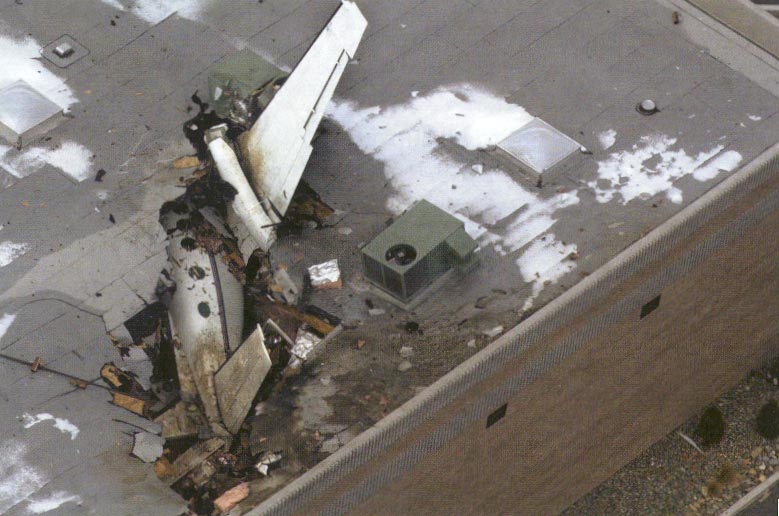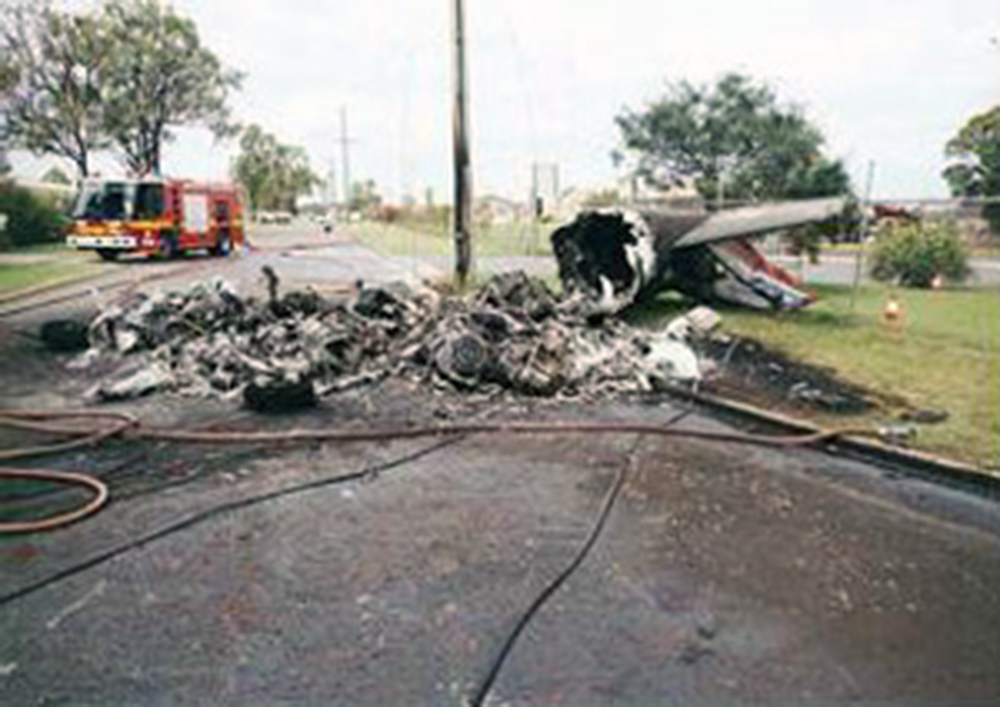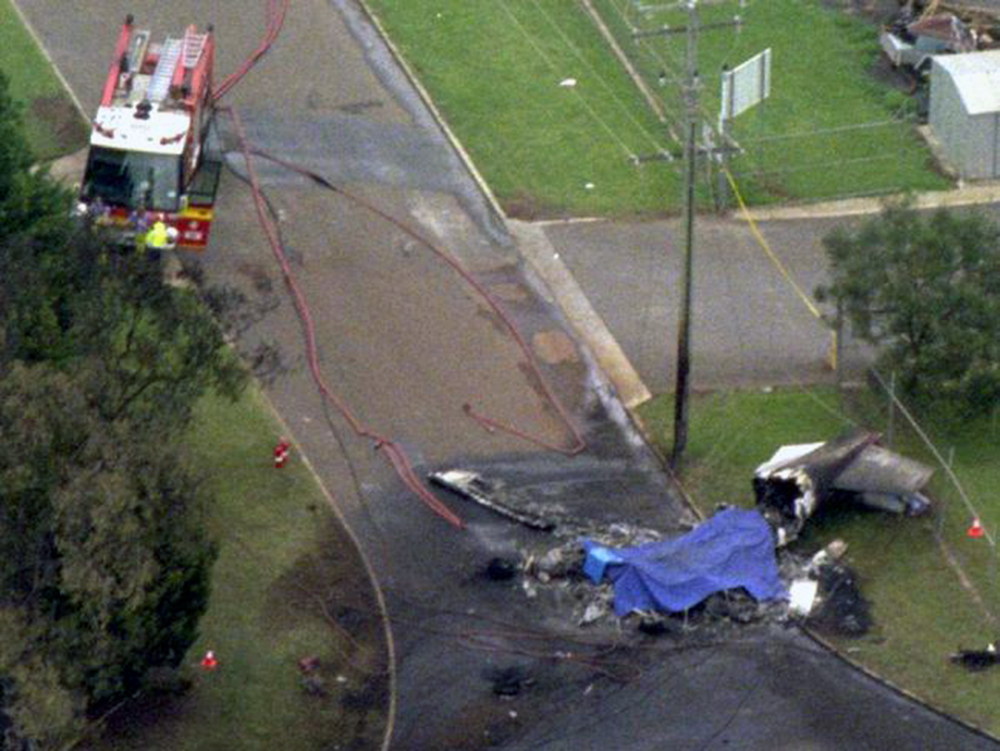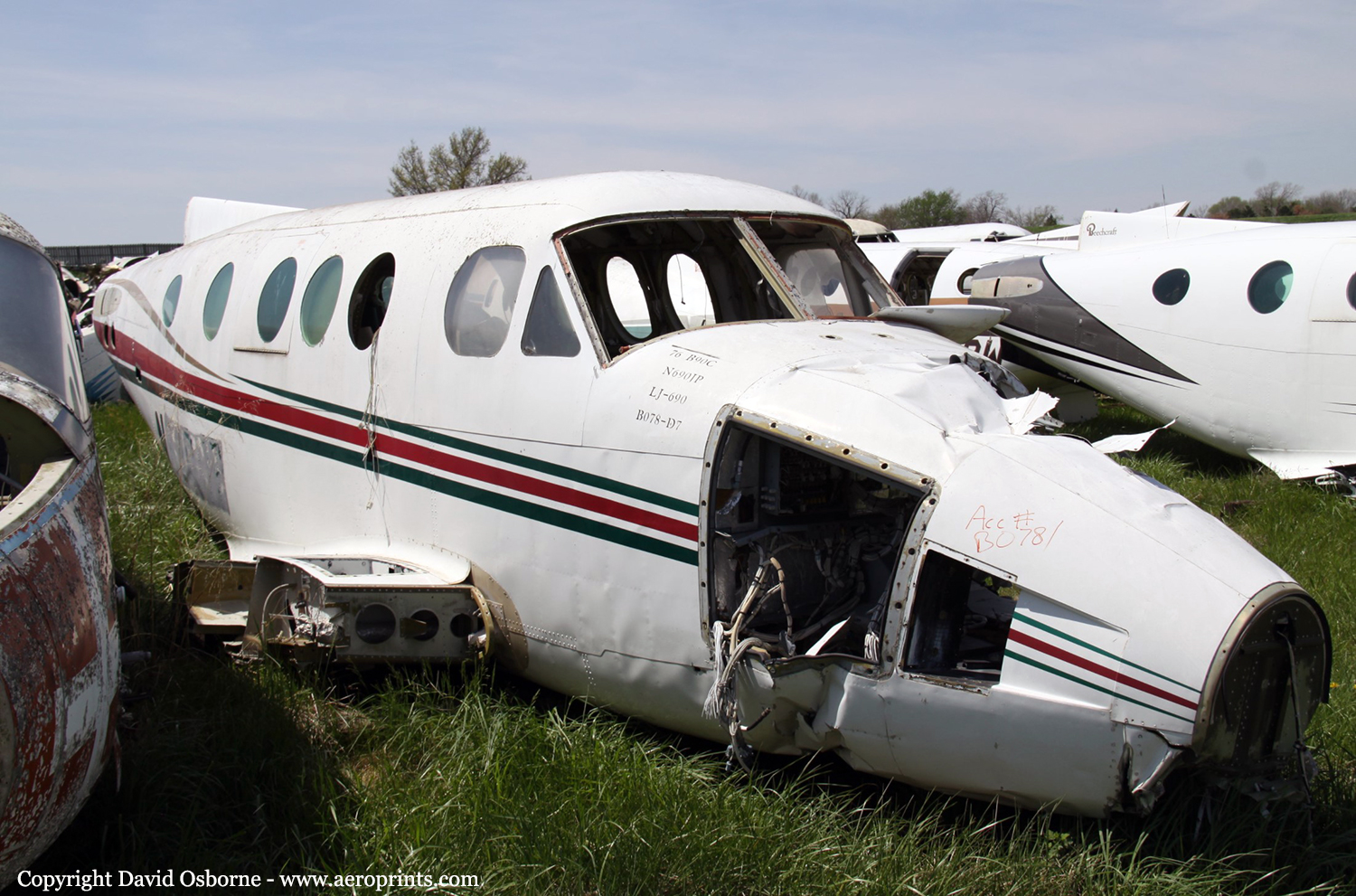Country
Crash of a Beechcraft E90 King Air in Reno
Date & Time:
Mar 13, 2002 at 1940 LT
Registration:
N948CC
Survivors:
Yes
Schedule:
Durango - Truckee
MSN:
LW-236
YOM:
1977
Crew on board:
1
Crew fatalities:
Pax on board:
5
Pax fatalities:
Other fatalities:
Total fatalities:
0
Captain / Total hours on type:
608.00
Aircraft flight hours:
8773
Circumstances:
During an instrument approach, upon descending to the prescribed minimum descent altitude, about 1/2 mile from the missed approach point, the pilot failed to maintain flying airspeed. The airplane stalled, rolled left, and in an uncontrolled descent collided with a commercial building 0.96 nm from the runway's displaced threshold. The accident occurred during the return portion of a round trip flight, while on final approach to the pilot's alternate airport due to a weather-induced diversion. Moderate intensity snow showers and freezing fog existed. During the initial approach, the reported visibility was 1 1/2 miles. About the time the pilot passed the final approach fix, the visibility decreased to 1/2 mile, but the pilot was not informed of the decrease below his 1-mile minimum requirement. The pilot had maintained the recommended 140-knot approach speed in the icing conditions until about 3 1/2 miles from the runway. Thereafter, the airplane's speed gradually decreased until reaching about 75 knots. After the airplane started vibrating, the pilot increased engine power, but his action was not timely enough to avert stalling. Company mechanics maintained the airplane. On previous occasions overheat conditions had occurred wherein the environmental ducting melted and heat was conducted to the adjacent pneumatic tube that provides deice air to the empennage boots. During the accident investigation, the deice tube was found completely melted closed, thus rendering all of the empennage deice boots dysfunctional.
Probable cause:
The pilot's inadequate approach airspeed for the existing adverse meteorological conditions followed by his delayed remedial action to avert stalling and subsequent loss of airplane control. Contributing factors were the pilot's reduced visibility due to the inclement weather and the icing conditions.
Final Report:

Crash of a Beechcraft C90 King Air in Cradock
Date & Time:
Dec 23, 2001 at 1630 LT
Registration:
ZS-INN
Survivors:
Yes
Schedule:
Port Elizabeth - Cradock
MSN:
LJ-523
YOM:
1971
Crew on board:
1
Crew fatalities:
Pax on board:
3
Pax fatalities:
Other fatalities:
Total fatalities:
0
Captain / Total hours on type:
118.00
Circumstances:
The private pilot was accompanied by his wife and his two daughters on a flight from Port Elizabeth to his farm in the Cradock district. On arrival at Cradock, the pilot apparently over-flew the runway for inspection and was on the downwind leg when the aircraft started to roll and yaw to the left. All engine indications were normal and the pilot had to decrease power on the right-hand engine in order to maintain control of the aircraft. With the reduction in power of the right-hand engine, the pilot was unable to maintain height and executed a forced landing on an open field. The aircraft was extensively damaged during the forced landing but no injuries were sustained. An on-site investigation was carried out on 24 December 2000 after which the aircraft was recovered to Lanseria aerodrome for further inspection. On inspection of the Left-hand propeller it was noted that the carbon block of the low pitch proximity sensor, which normally runs inside the Low-Pitch stop collar, was bent down at an angle, which would have rendered the secondary Low-Pitch stop inoperative. Due to the fact that the aircraft sustained damage to it's electronic circuitry it was not possible to verify the proper operation of the propeller pitch control system.
Probable cause:
Due to damage sustained during the accident, the proper operation of the propeller pitch control system could not be verified. The cause of the accident therefore remains undetermined.
Crash of a Beechcraft C90 King Air in Toowoomba: 4 killed
Date & Time:
Nov 27, 2001 at 0837 LT
Registration:
VH-LQH
Survivors:
No
Schedule:
Toowoomba – Goondiwindi
MSN:
LJ-644
YOM:
1975
Crew on board:
1
Crew fatalities:
Pax on board:
3
Pax fatalities:
Other fatalities:
Total fatalities:
4
Captain / Total hours on type:
385.00
Aircraft flight hours:
6931
Circumstances:
On 25 June 2004, the Australian Transport Safety Bureau released its final investigation report into an accident which occurred on 27 November 2001 at Toowoomba aerodrome, Qld, involving a Beech Aircraft Corporation King Air C90 aircraft, registered VH-LQH, which experienced an engine failure shortly after takeoff. The aircraft was destroyed and all four occupants sustained fatal injuries.
Probable cause:
In light of a further review of the evidence, the ATSB has reconsidered its original finding that the initiating event of the engine failure of VH-LQH was a blade release in the compressor turbine and proposes that an alternative possibility could have been that the initiating event occurred in the power turbine. Notwithstanding this possibility, in either scenario, the remainder of the findings and safety recommendations contained in the original ATSB report are still relevant.
Final Report:


Crash of a Beechcraft C90 King Air in Dallas
Date & Time:
Oct 9, 2001 at 1322 LT
Registration:
N690JP
Survivors:
Yes
Schedule:
Taos - Dallas
MSN:
LJ-690
YOM:
1976
Crew on board:
1
Crew fatalities:
Pax on board:
0
Pax fatalities:
Other fatalities:
Total fatalities:
0
Captain / Total hours on type:
100.00
Aircraft flight hours:
2356
Circumstances:
The commercial pilot flew the airplane on a cross-country flight of at least 2 hours and 47 minutes before dropping of his passengers, and flew back for 2 hours and 7 minutes without refueling. The pilot reported that as the airplane turned onto final approach, the right engine began to surge. He reduced the power on the right engine and increased power on the left, but the airplane started to roll right so he elected to reduce the power on the left engine and land in an alley. Prior to impacting wires, the pilot retracted the landing gear and brought the condition levers to "cut-off." A witness observed the airplane prior to impact and noted that the "motor wasn't on." The airplane impacted power lines, a tree, a natural gas meter, two residences, and a fence. The fuel tanks were compromised during the impact sequence, and the fire department sprayed the area with fire retardant foam. A test of the water runoff revealed "negative results for petroleum risk." Examination of both engines' fuel lines between their respective firewalls and fuel heaters, and fuel pumps and fuel control units revealed that they were void of fuel.
Probable cause:
The pilot's failure to refuel the airplane, which resulted in fuel exhaustion and subsequent loss of dual engine power while on approach.
Final Report:

Crash of a Beechcraft C90 King Air near Mainpuri: 8 killed
Date & Time:
Sep 30, 2001 at 1331 LT
Registration:
VT-EFF
Survivors:
No
Schedule:
New Delhi - Kanpur
MSN:
LJ-705
YOM:
1977
Crew on board:
2
Crew fatalities:
Pax on board:
6
Pax fatalities:
Other fatalities:
Total fatalities:
8
Circumstances:
En route from New Delhi to Kanpur, the crew reported over Aligarh. Short of next reporting point Kadas, the aircraft was about 10 miles right of track for which the permission was obtained and the pilot requested for a direct routing to Kanpur. About 10 minutes later, at an altitude of 14,000 feet, while cruising in bad weather conditions, the twin engine aircraft entered an uncontrolled descent, partially disintegrated in the air and eventually crashed in an open field near Mainpuri. All eight occupants were killed.
Probable cause:
While in cruising altitude, the crew encountered severe updrafts while flying in thunderstorm activity. Following a possible abrupt and abnormal manoeuvre, the crew lost control of the airplane that entered a spiral dive, resulting in an in-flight break up due to aerodynamic overload, leading to a total loss of control followed with a heavy impact with the ground.
Final Report:


